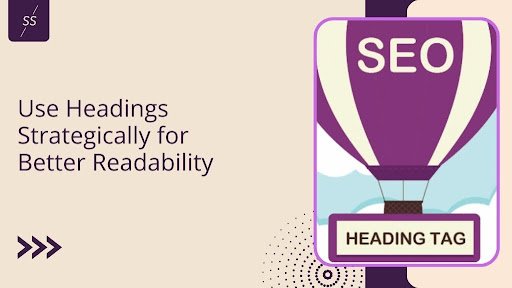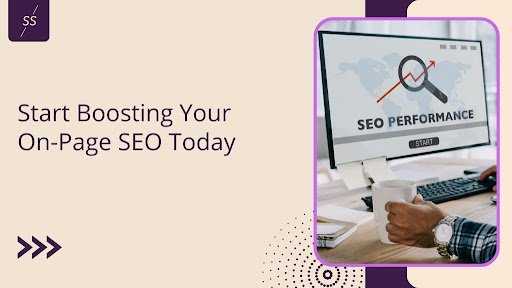Why On-Page SEO Matters
In today’s crowded online marketplace, getting noticed can be tough. To stand out, you need more than just a pretty website; you need to make sure it performs well in search engines. That’s where on-page SEO comes into play. On-page SEO involves optimizing elements on your website to boost its visibility and relevance. But it’s not just about stuffing keywords; it’s about creating a site that both users and search engines love. If you’re looking to boost your rankings and attract more traffic, these 11 creative strategies will help you get there.
1. Craft Engaging and Keyword-Rich Titles
Your title is often the first thing people see in search results, so make it count. An engaging, keyword-rich title not only grabs attention but also tells search engines what your page is about. Start by including your main keyword in the title, but don’t stop there. Make it catchy and relevant to what users are searching for. For example, instead of “SEO Tips,” try “10 Essential SEO Tips to Boost Your Website’s Ranking.”
2. Optimize Your Meta Descriptions for Maximum Clicks
Meta descriptions might not directly affect your search rankings, but they play a crucial role in attracting users to click on your link. Write an attractive meta description that summarizes what your page is about and includes your main keyword. Aim for clarity and appeal; you want to encourage users to choose your page over others. For instance, a meta description like “Learn 11 creative ways to improve your on-page SEO and boost your website’s visibility” can be very effective.
3. Use Headings Strategically for Better Readability

Headings are more than just titles for sections—they help organize your content and make it easier for readers to scan. Use headings (H1, H2, H3) to structure your content logically. The H1 tag should be used for your main title, and H2 and H3 tags for subheadings. This not only improves readability but also helps search engines to know the hierarchy of your content. For instance, using “How to Create Engaging Content” as an H2 under a section about content creation makes your content clearer and more organized.
4. Increase User Experience with Fast-Loading Pages
Nobody likes waiting for a slow website to load. A fast-loading page keeps users happy and reduces bounce rates. Tools like Google PageSpeed perception can help you identify issues that may be slowing down your site. Optimize images, minimize code, and hold caching to speed things up. A quick-loading site can significantly boost your search rankings and keep visitors coming back.
5. Create High-Quality, Shareable Content
Content matters, but only if it’s valuable and engaging. Create content that addresses your audience’s needs, solves their problems, and keeps them interested. High-quality content often gets shared, which can drive more traffic to your site. Consider using infographics, videos, and in-depth articles to engage your audience. The more valuable your content, the more likely it is to be shared and linked to.
6. Optimize Images for Better Performance and SEO
Images play a big role in web design, but they can also impact your site’s performance. To avoid slow loading times, compress images before uploading them. Use descriptive, keyword-rich file names and include alt text to help search engines know what the image is about. For example, instead of naming an image “IMG1234.jpg,” use “red-shoes-collection.jpg.” This small step can help improve your site’s SEO and accessibility.
7. Implement Internal Linking to Boost Page Authority
Internal linking helps users plot your site and keeps them engaged longer. It also helps distribute page authority across your site. Link relevant content to other pages on your site using descriptive anchor text. For example, if you’re writing about SEO tips, you could link to another article about keyword research. This practice not only helps with SEO but also improves the overall user experience.
8. Utilize Schema Markup to Improve Search Visibility
Schema markup is a type of code that helps search engines know the content on your site. By adding schema markup, you can provide more detailed information about your content, like reviews, events, or product details. This can lead to rich snippets in search results, which can attract more clicks. Tools like Google’s Structured Data Markup Helper can assist you in adding schema to your site.
9. Ensure Mobile-Friendliness for Better Rankings
With more people using mobile devices to browse the web, having a mobile-friendly site is important. Google’s mobile-first indexing means that your mobile site is the primary version used for ranking. Test your site’s mobile compatibility using Google’s Mobile-Friendly Test tool and make sure it looks and performs well on smartphones and tablets.
10. Monitor and Improve Bounce Rate
Bounce rate measures how many visitors leave your site after viewing only one page. A high bounce rate can signal that users are not finding what they’re looking for or are not engaging with your content. To reduce bounce rate, ensure your content is relevant and engaging. Improve your site’s design, speed, and navigation to make it easier for users to find what they need. Adding internal links and calls-to-action can also help keep visitors on your site longer.
11. Regularly Update Content to Stay Relevant
Search engines favor fresh, updated content. Regularly review and update your existing content to keep it relevant and accurate. This could involve adding new information, updating statistics, or revising outdated sections. Updating your content not only helps with SEO but also ensures that your audience always has access to the latest information. Set a schedule to review your content periodically and make necessary updates.
Conclusion: Start Boosting Your On-Page SEO Today

Improving your on-page SEO doesn’t have to be overwhelming. By applying these 11 creative strategies, you can boost your website’s visibility, attract more traffic, and provide a better experience for your users. Start with the tips that resonate most with your needs and watch as your search engine rankings and user engagement improve. Don’t wait—implement these changes today and see the difference for yourself!
About Us
Are you looking for the right partner to help you set up your website and manage your marketing efforts? Look no further than Sixberry Solutions—a cutting-edge digital marketing agency in Maine.
We started as a small business and know that every business is unique and needs a personalized approach to its marketing efforts. We ensure your marketing strategies are tailored to your business and industry to help you grow.
Our services include SEO, website design, PPC advertising, On-touch reviews, and more. You can reach us at +1 (207) 830-1077 or fill out our contact form to know more. Don’t wait any longer–schedule a call today to get started!
Looking for a Portland web design company?
Contact Sixberry Solutions; we are a Maine web design company
Looking for a Maine SEO Service?
Contact Sixberry Solutions; we are a Maine SEO company.
